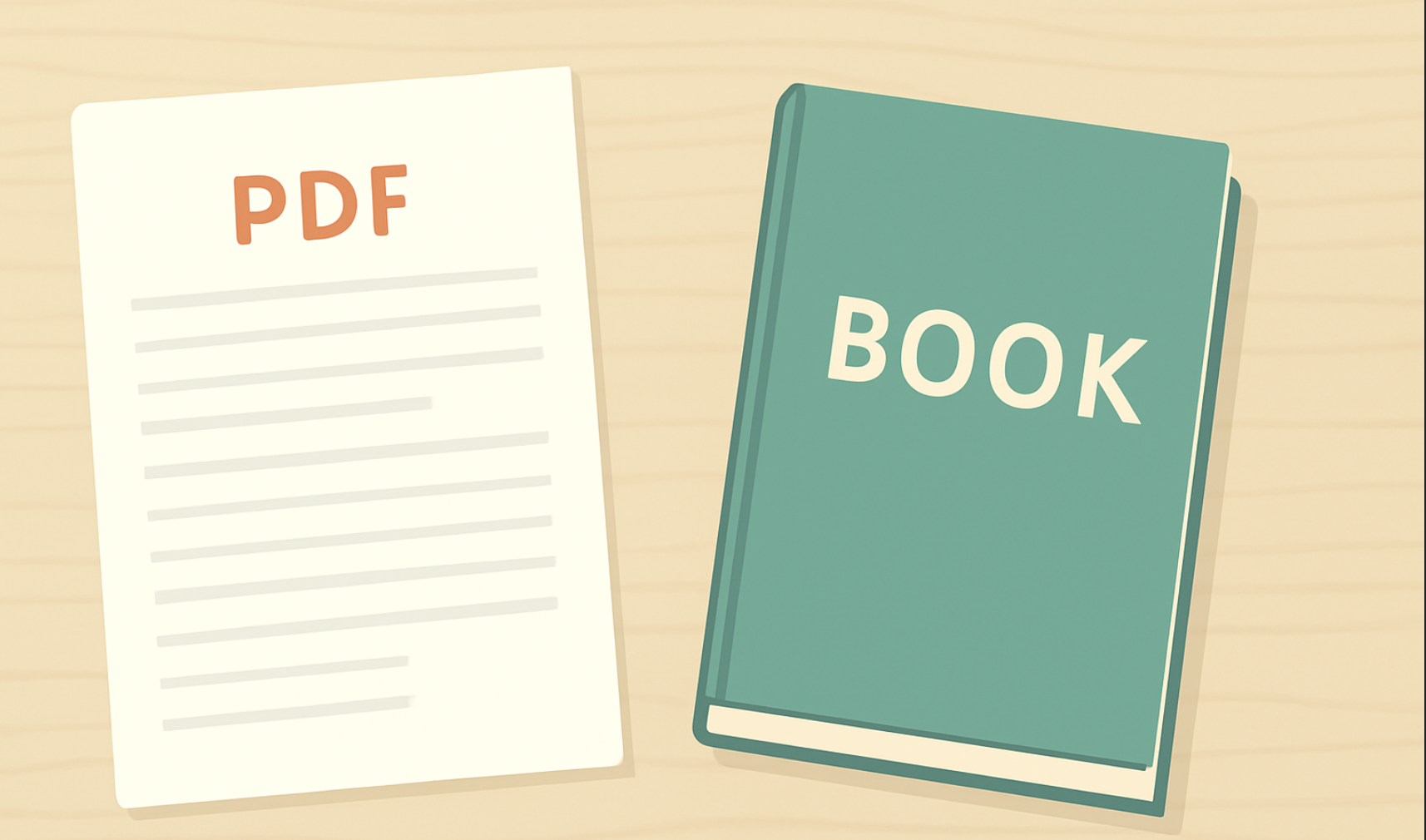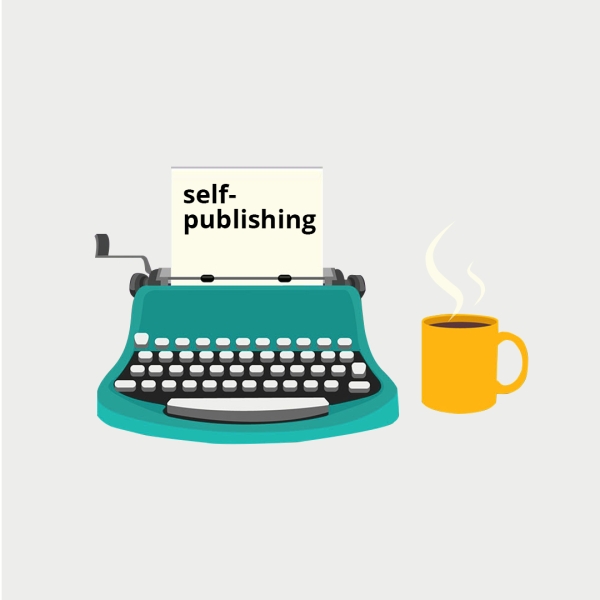In today’s evolving publishing landscape, self-publishing has emerged as a viable and often lucrative option for authors. Maximizing royalties is crucial for self-published authors seeking to achieve financial success and sustain their writing careers. Unlike traditional publishing, where royalties can be significantly lower, self-publishing offers authors the opportunity to retain a higher percentage of their book’s earnings. As the industry continues to shift, understanding the intricacies of self-publishing, royalty structures, and effective book sales strategies becomes essential.
This article will explore key concepts such as self-publishing, royalties, and book sales, providing valuable insights and practical tips to help authors maximize their earnings and thrive in the competitive literary world. Whether you’re a new author or an experienced writer looking to transition to self-publishing, mastering these elements is vital to your success.
Self-Publishing
Self-publishing refers to the process where authors independently publish their work without the involvement of a traditional publishing house. This approach grants authors full control over the production, distribution, and marketing of their books. Unlike traditional publishing, where a publishing company handles these aspects in exchange for a portion of the profits and creative control, self-publishing allows authors to retain a higher percentage of their royalties and maintain creative autonomy.
In traditional publishing, authors typically go through a lengthy process of querying agents and publishers, often facing numerous rejections before securing a deal. Once accepted, the publishing house manages editing, design, printing, and distribution, but takes a significant share of the book’s profits. Conversely, self-publishing bypasses these gatekeepers, enabling authors to bring their work to market more quickly and efficiently.
The advantages of self-publishing include higher royalty rates, complete creative control, and the ability to directly engage with readers. Authors can set their own prices, choose their release dates, and update their content as needed. However, self-publishing also presents challenges such as the need for upfront investment in production costs, the responsibility of managing all aspects of the publishing process, and the necessity of building a marketing strategy from scratch.
Your Publishing Journey Awaits – Start NowKey players in the self-publishing industry include Amazon Kindle Direct Publishing (KDP), which dominates the market with its user-friendly platform and extensive reach. Other notable platforms are Spines, Smashwords, IngramSpark, and Draft2Digital, each offering unique services and distribution options. These platforms provide authors with the tools and resources needed to publish and distribute their books globally, making self-publishing an increasingly popular choice for writers seeking financial and creative independence.
Setting the Right Price
Establishing the right price for your self-published book is crucial for maximizing royalties and ensuring market success. A well-thought-out pricing strategy can significantly impact sales volume and overall earnings, making it essential to understand the various factors involved.
When setting your book’s retail price, consider factors such as production costs, target audience, market trends, and the perceived value of your book. Production costs, including editing, cover design, and printing, should be covered by your pricing. Additionally, understanding your target audience’s willingness to pay and comparing prices of similar books in your genre can help you find a competitive price point.
Pricing directly affects royalties, as most self-publishing platforms offer different royalty rates based on the book’s price. For instance, Amazon KDP provides a 70% royalty rate for eBooks priced between $2.99 and $9.99, while books priced outside this range earn only 35% royalties. Therefore, pricing your book within the optimal range can maximize your earnings per sale.
Effective pricing strategies vary depending on the book and market. One successful approach is introductory pricing, where the book is launched at a lower price to attract early readers and generate positive reviews, followed by a price increase once the book gains traction. Another strategy is tiered pricing, where eBooks are priced lower to encourage impulse buys, while print and audiobooks are priced higher to reflect their added value.
Ultimately, the right pricing strategy balances affordability for readers with profitability for the author, leveraging market insights and platform-specific royalty structures to maximize income and reach.
Choosing the Right Self-Publishing Platform
Selecting the appropriate self-publishing platform is a pivotal decision that can influence your book’s reach, royalty rates, and overall success. Several popular platforms cater to self-published authors, each offering unique features and benefits.
Amazon Kindle Direct Publishing (KDP): Amazon KDP is the dominant player in the self-publishing market, known for its ease of use and extensive reach. It offers authors up to 70% royalties on eBooks priced between $2.99 and $9.99. Additionally, KDP’s integration with Amazon’s vast customer base provides significant exposure. However, opting for KDP Select, which offers promotional tools in exchange for exclusivity, means your eBook can only be sold through Amazon.
Spines: Spines revolutionizes publishing with a streamlined process to publish books in under 30 days, offering 100% royalties to authors. Our AI-driven efficiency ensures affordability, while personal production managers provide dedicated support. Spines offers all formats, global distribution, a user-friendly dashboard, and a 7-day money-back guarantee, catering to both new and established authors.
Smashwords: Smashwords is a versatile platform that distributes eBooks to major retailers like Barnes & Noble, Apple Books, and Kobo. It provides authors with broad distribution options and flexible pricing. However, its interface can be less user-friendly compared to Amazon KDP, and the royalties might vary depending on the retailer.
IngramSpark: IngramSpark excels in print-on-demand services and offers extensive distribution channels, including bookstores and libraries. It’s ideal for authors looking to publish both print and eBooks. The downside is the upfront cost for setup and revisions, and the platform’s interface can be complex for new authors.
Draft2Digital: Known for its simplicity and excellent customer service, Draft2Digital offers wide distribution and useful tools for formatting and marketing. It takes a small percentage of royalties, but there are no upfront fees, making it accessible for most authors.
Exclusive vs. Non-Exclusive Distribution: Choosing exclusive distribution, such as KDP Select, can provide higher royalties and additional promotional opportunities but limits your book to one platform. Non-exclusive distribution allows you to reach a broader audience through multiple retailers but might involve lower royalty rates per platform.
The right platform choice depends on your specific goals, whether it’s maximizing reach, simplifying the publishing process, or achieving the highest possible royalties. Carefully evaluate each option’s pros and cons to make an informed decision that aligns with your publishing strategy.
Maximizing Book Sales
Maximizing book sales as a self-published author involves a multifaceted approach, combining effective marketing strategies, leveraging positive reviews, and engaging with readers across multiple platforms and formats.
Marketing Strategies for Self-Published Authors: Effective marketing is essential for increasing visibility and driving sales. This can include running targeted advertising campaigns on platforms like Amazon, Facebook, and BookBub, where you can reach potential readers based on their interests and reading habits. Additionally, investing in a professional book cover and compelling book description can significantly boost your book’s appeal. Hosting giveaways, discount promotions, and participating in online book tours can also create buzz around your book.
Importance of Positive Reviews and How to Obtain Them: Positive reviews are crucial for building credibility and encouraging new readers to purchase your book. To obtain reviews, consider reaching out to book bloggers and reviewers who specialize in your genre. Offering free review copies in exchange for honest reviews can be an effective strategy. Encouraging your readers to leave reviews on Amazon, Goodreads, and other platforms by including a polite request at the end of your book can also increase the number of reviews.
Utilizing Social Media and Author Platforms: Social media is a powerful tool for connecting with readers and promoting your book. Platforms like Twitter, Instagram, Facebook, and TikTok allow you to share updates, behind-the-scenes content, and engage directly with your audience. Building an author website or blog can serve as a central hub for your online presence, providing readers with more information about your books, upcoming releases, and events.
Leveraging Multiple Formats: Offering your book in multiple formats, such as eBook, print, and audiobooks, can reach a wider audience. Each format caters to different reading preferences, increasing the chances of sales. Print-on-demand services make it easy to offer physical copies without significant upfront costs.
Building a Target Audience and Engaging with Readers: Identifying and understanding your target audience is key to effective marketing. Engage with your readers through newsletters, social media interactions, and virtual events. Building a loyal reader base takes time but can lead to sustained book sales and word-of-mouth recommendations.
Combining these strategies can help self-published authors maximize their book sales, increase their visibility in the literary world, and ultimately achieve greater financial success.
Understanding and Calculating Royalties
Understanding and accurately calculating royalties is crucial for self-published authors aiming to maximize their earnings. Royalty structures and rates can vary significantly across different self-publishing platforms, impacting how much an author earns from each sale.
Explanation of Royalty Structures and Rates: Royalty structures typically involve a percentage of the book’s retail price being paid to the author. Platforms like Amazon KDP offer two primary royalty rates: 35% and 70%, depending on the book’s pricing and distribution options. Other platforms, such as Smashwords and IngramSpark, have their own royalty structures, which can be influenced by the distribution channels used.
How Royalties Are Calculated: Royalties are generally calculated as a percentage of the net sales, which is the retail price minus any applicable taxes and distribution fees. For example, if an eBook is sold at $4.99 on Amazon KDP under the 70% royalty option, the royalty calculation would be: $4.99 (retail price) – $0.99 (delivery fee) = $4.00 (net sales), resulting in a royalty of $2.80 (70% of $4.00).
Impact of Book’s Retail Price on Royalty Earnings: The book’s retail price directly affects royalty earnings. Pricing too low might increase sales volume but reduce per-unit earnings, while pricing too high could limit sales. Finding a balance is key. For instance, eBooks priced between $2.99 and $9.99 on Amazon KDP qualify for the 70% royalty rate, whereas books priced outside this range only earn 35%.
Graduated Royalties and Fixed Percentage Models: Some platforms offer graduated royalty rates based on sales volume or specific promotional activities. For instance, Amazon’s KDP Select program can provide higher royalties during promotional periods in exchange for exclusive distribution rights. Fixed percentage models, common on platforms like Smashwords, offer consistent royalty rates regardless of the book’s price.
Real-Life Examples of Royalty Calculations: Consider an eBook priced at $5.99 on Amazon KDP with a 70% royalty rate. After deducting a $0.99 delivery fee, the net sales amount to $5.00. The author would earn $3.50 per sale (70% of $5.00). On Smashwords, if an eBook is priced at $4.99 with an 85% royalty rate for direct sales, the author would earn approximately $4.24 per sale.
By understanding these royalty structures and how to calculate them, self-published authors can make informed decisions about pricing and distribution to maximize their earnings and achieve greater financial success in the competitive publishing industry.
Reducing Production and Delivery Costs
Minimizing production and delivery costs is essential for self-published authors aiming to maximize their royalties while maintaining high-quality standards for their books.
Strategies to Minimize Production Costs:
1. Printing: Opt for print-on-demand (POD) services, which eliminate the need for large upfront print runs and reduce storage costs. Services like Amazon KDP and IngramSpark offer POD options.
2. Editing: Consider hiring freelance editors or using peer review groups to reduce costs without compromising on quality. Tools like Grammarly can assist with initial editing.
3. Cover Design: Use affordable design services like Fiverr or platforms like Canva, which offer customizable templates. Investing in a professional cover design can significantly impact sales, so balance cost with potential return.
Tips for Reducing Delivery Costs:
1. Digital Delivery: For eBooks, choosing a self-publishing platform with lower delivery fees can save money. For instance, Amazon KDP charges delivery fees based on file size, so optimizing file size can reduce costs.
2. Print Books: For physical books, consider POD to minimize shipping and storage expenses. Offering bulk order discounts can also reduce per-unit delivery costs.
The Role of Print-on-Demand Services: POD services are crucial for cost-effective self-publishing. They print books as orders come in, reducing waste and eliminating the need for large print runs. This approach ensures that authors only pay for what they sell, streamlining production and distribution.
Balancing Quality with Cost-Effectiveness: While cutting costs is important, maintaining quality is crucial for long-term success. Investing in professional editing, a compelling cover, and quality printing ensures a polished product that can attract readers and positive reviews. Strategic cost management without compromising quality can lead to higher sales and better royalties.
By implementing these strategies, self-published authors can effectively reduce production and delivery costs, enhancing their profitability and success in the competitive book market.
Your Publishing Journey Awaits – Start NowNavigating the Publishing Process
The self-publishing process involves several critical steps, each requiring careful planning and execution to ensure a successful book launch.
Steps Involved in the Self-Publishing Process:
1. Writing: Develop a compelling manuscript with a clear structure and engaging content.
2. Editing: Invest in professional editing to refine your manuscript, ensuring it is free of errors and polished for publication.
3. Formatting: Format your book for different platforms and formats, including eBook, print, and audiobooks. Use tools like Scrivener or Vellum to simplify this process.
4. Publishing: Choose a self-publishing platform and upload your formatted book. Follow the platform’s guidelines for metadata, cover design, and pricing.
5. Marketing: Develop a marketing plan to promote your book, utilizing social media, email newsletters, and promotional campaigns.
Key Considerations During Each Phase:
- Writing: Focus on quality and originality.
- Editing: Hire experienced editors to ensure a professional finish.
- Formatting: Ensure compatibility with multiple devices and print standards.
- Publishing: Select the right platform based on your distribution goals.
- Marketing: Create a strategy that targets your audience effectively.
Importance of Creative Control: Self-publishing grants you complete creative control over every aspect of your book, from content to cover design. This allows you to maintain your vision and brand identity, ensuring the final product aligns with your goals.
Informed Decision-Making: Make informed decisions at each stage by researching best practices, seeking professional advice, and staying updated with industry trends. This approach helps you navigate the self-publishing process efficiently and successfully.
Exploring Additional Income Streams
Diversifying income streams can significantly enhance a self-published author’s financial success beyond book sales alone. By exploring various avenues, authors can create multiple revenue sources, ensuring a more stable and lucrative career.
Diversifying Income Sources:
Engage in speaking engagements, workshops, and conferences related to your book’s subject matter. These events not only provide additional income but also help to establish your authority and expand your audience. Additionally, consider creating and selling merchandise, such as branded T-shirts, mugs, or posters, that resonate with your readers.
Benefits of Offering Expanded Distribution:
Distributing your book through multiple platforms and formats, such as eBooks, print books, and audiobooks, can reach a wider audience and increase sales. Platforms like IngramSpark and Draft2Digital offer expanded distribution options that include libraries and international markets, enhancing your book’s visibility and accessibility.
Creating Value-Added Products:
Develop value-added products like workbooks, special editions, or companion guides that complement your main book. These products can cater to specific segments of your audience, such as educators or fans, providing additional value and encouraging repeat purchases.
Long-Term Strategies for Financial Success:
Invest in building a strong author brand and maintaining consistent engagement with your audience through newsletters, social media, and personal interactions. Continuously releasing new content, whether books or related products, keeps your audience engaged and your income streams active. Additionally, explore licensing deals and collaborations with other authors or businesses to further expand your reach and revenue potential.
By diversifying income sources and strategically expanding distribution, self-published authors can create a more robust financial foundation and achieve sustained success in the competitive literary market.
Empowering Your Self-Publishing Success
Maximizing royalties as a self-published author requires strategic planning and informed decision-making. Key strategies include setting the right price, choosing the appropriate self-publishing platform, employing effective marketing techniques, understanding royalty calculations, and minimizing production and delivery costs. Additionally, exploring diverse income streams, such as speaking engagements and merchandise, can enhance financial success.
Taking control of your publishing journey empowers you to make creative and financial decisions that align with your goals. The self-publishing route offers unparalleled creative freedom and the potential for higher earnings compared to traditional publishing.
The potential for success in self-publishing is significant. With dedication, continuous learning, and the right strategies, authors can achieve remarkable financial success and make a lasting impact in the literary world. Embrace the opportunities and challenges of self-publishing, and chart your path to a thriving writing career.
Schedule a free 15-minute call with Spines to transform your manuscript into a published masterpiece swiftly and efficiently, starting at just $99 per month. Enjoy industry-leading 100% royalties, global distribution, and innovative marketing tools designed to maximize your reach and sales.








